Celebrating People-Miles
Earlier this month, on a research trip to central Virginia, the Geology department’s venerable 12-passenger van rolled on beyond 100,000 miles- that’s a milestone worth celebrating. The department acquired this GMC Savana 3500 in the late winter of 2006, and 15 years later it’s got the scars worthy of a long and prosperous career. Yet, the van is still a reliable hauler, even if it is not as winsome as it once was.
For some historical context- in the mid-2000s, the Geology department had to rent vans from private vendors for class field trips, travel to professional meetings, and research trips. It was not only costly, but a logistical quagmire. At about the same time, William & Mary acquired a new fleet of police cars. I asked an officer friend about how many miles the average W&M police cruiser accrued per year, he reckoned it was somewhere between 1,000 and 3,000 miles. For most of those miles the cruiser likely had one occupant, which got me thinking about people-miles.
People-miles is simply the number of people in a vehicle multiplied by the miles traveled. Let’s consider, a cruiser with a single officer who travels 2,500 miles in a year:
1-person x 2,500 miles = 2,500 people-miles
Compare that to a single van with 10 geology students and a faculty member on a weekend field trip to the Blue Ridge Mountains–
11 people x 350 miles = 3,850 people-miles
Just one vehicle on a single geology field trip racks up a large stock of people-miles.
Collectively, all the field trips and other excursions that the Geology department takes in a given year add up to somewhere beyond 200,000 people-miles/year. That’s many miles on the road for a bunch of people. To put some perspective to this value, consider that the only W&M department that accrues more people-miles/year than Geology is the Athletics department.
With the people-miles data in hand, the Geology department asked the Dean of Arts & Sciences to support Geology’s purchase of a new van because, in the long run, it’d be a huge cost saver. In 2006, the Dean agreed with our logic, and went in halfsies with the department to purchase a new vehicle. Fifteen years on, and four deans later, the Geology van continues to provide value and reliability.
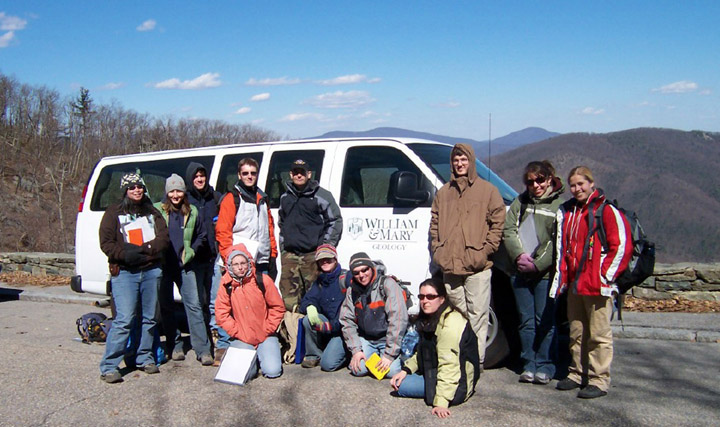
The maiden voyage in mid-March 2006 on a Geological Field Methods class trip to Shenandoah National Park.
As 100,000 miles rolled by on the odometer, I wondered how many people-miles this van has accumulated. If we’ve averaged 10-passengers for the duration, then the vehicle has exceeded a million people-miles. I estimate we’re in the range of 800 to 900 thousand people-miles. For some, a vehicle that’s passed 100,000 miles should be summarily retired. I drive a Toyota 4Runner with more than 262,000 miles, so I view a vehicle with 100,000-miles to be in its prime:). To be sure, the 2006 GMC van lacks many modern amenities such as USB charging ports and Bluetooth.
The van has spent its career moving geologists around eastern North America. In this vehicle William & Mary researchers have traveled from coastal plain bluffs in Alabama to the Smithsonian’s extensive fossil collections in Washington, DC. We’ve piloted the van to numerous Geological Society of America meetings from Philadelphia to Chattanooga and enough places in between that we’ve lost track.
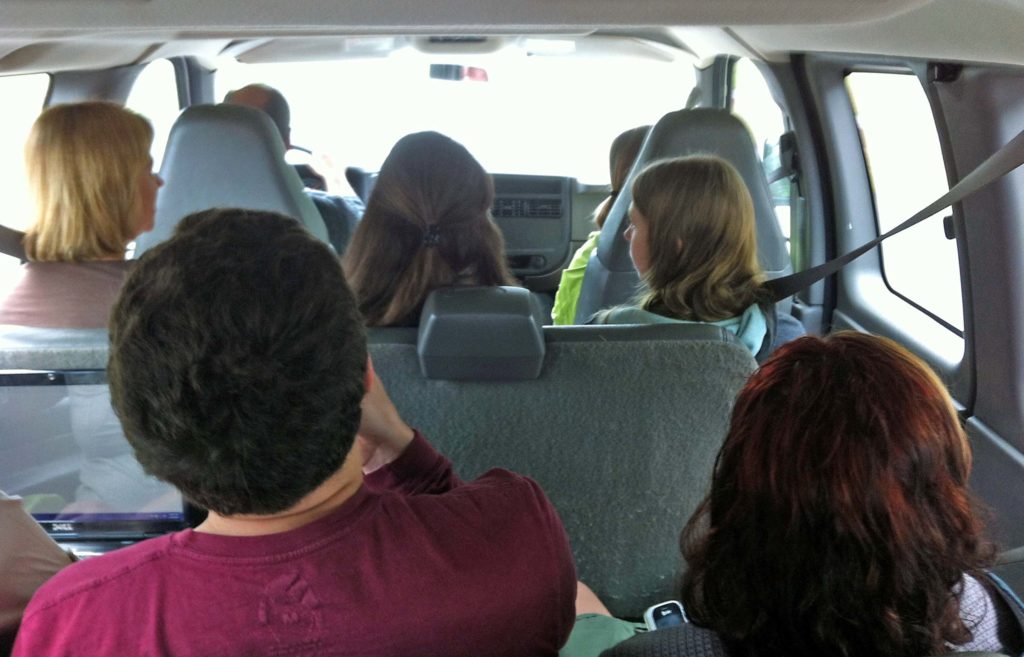
A view from the backbench seat, en route to a Geological Society of America meeting in Asheville, North Carolina (2012).
The van’s vast cargo space enables us to load in camping and cooking supplies that support field trips with >40 students. On cold and rainy nights in the field, the van has taken in geoscientists seeking refuge from wet and miserable conditions. The van’s high clearance is a plus for field work, although we’ve gotten it stuck in the field on more than one occasion.
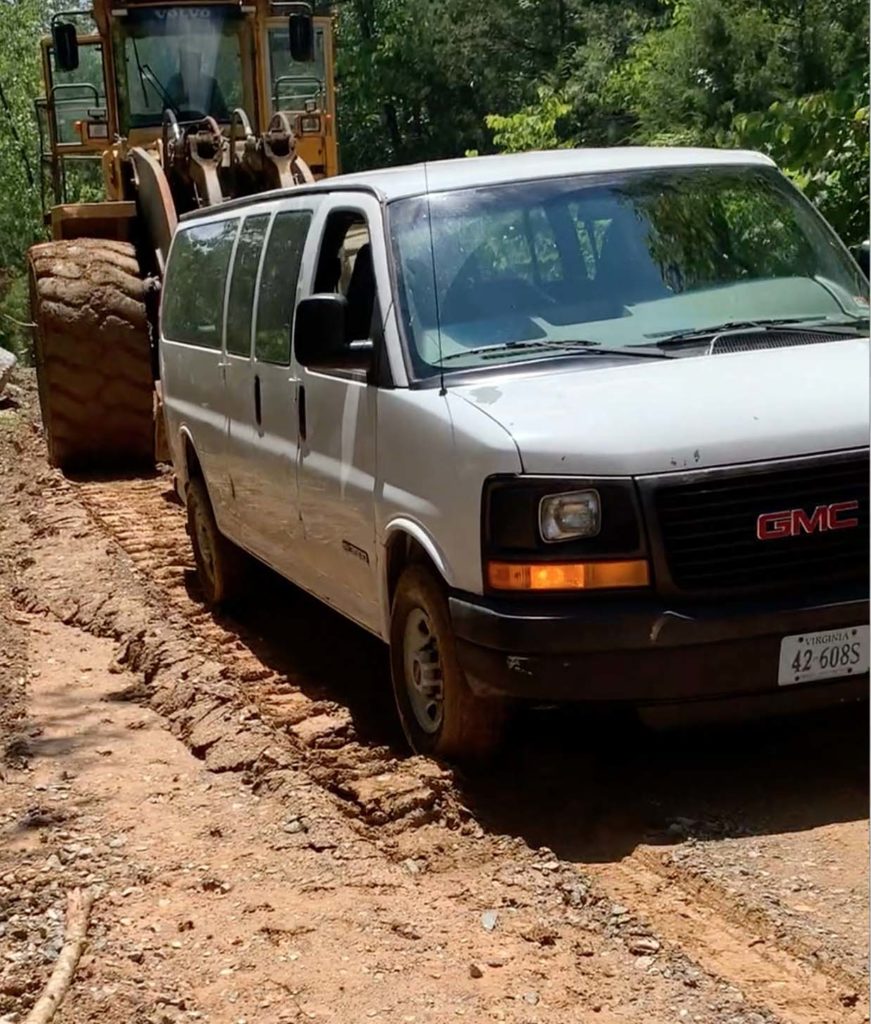
Extraction from the mud underway- thanks to a massive Volvo wheel loader (2020). Photo by Terri Zach (W&M Geology ’21)
100,000 miles in 15 years comes out to an average of ~6,700 miles per year. The pandemic has slowed that roll, but in 2021 we are venturing out again for specific research trips and local class trips with a limited payload of students. We’re looking forward to new adventures with this van for a bit longer, but realistically the time is not far off when we’ll need a new set of wheels.
By 2016, three words had become wildly popular in higher education administration- authentic experiential learning. Yet, for a decade prior to the blossoming of that three-word catch phrase, the William & Mary Geology van quietly and effectively took students to the field, to museums, to professional meetings, and on research trips- all places where authentic experiential learning actually happens. When the pandemic is finally in the rear-view mirror, I look forward to inhabiting those vital places and spaces with William & Mary students once more. Something as mundane and utilitarian as a reliable 12-passenger van helps make all that possible.
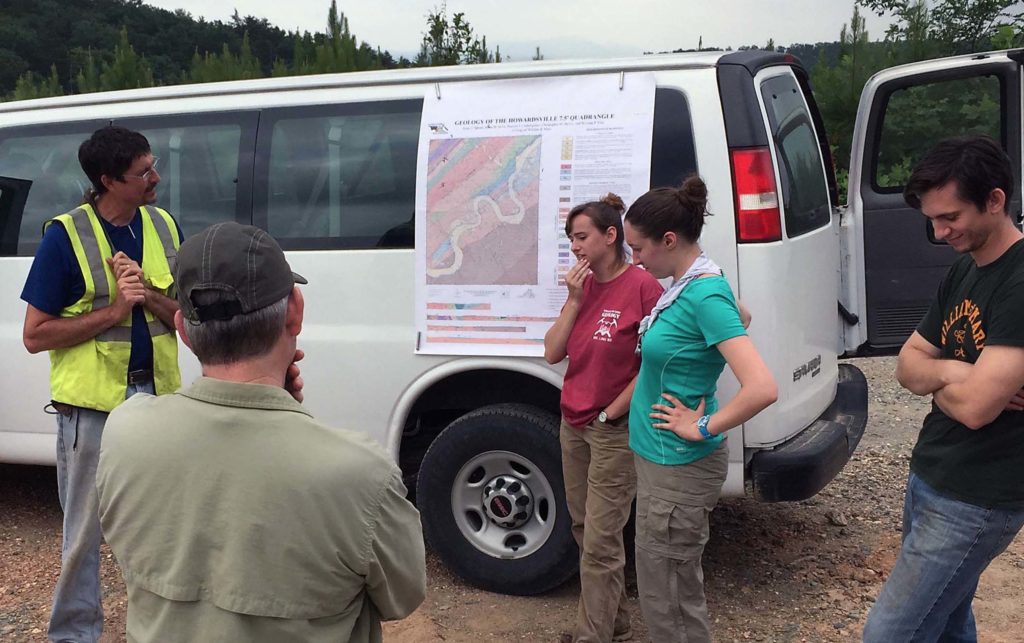
William & Mary geologists (from right to left- Vinny Cunningham, Ciara Mills, and Anna Spears) present their research findings and new geological map (hanging off the W&M Geology van) on a field review in 2015.
Let’s celebrate the long and productive career of Geology’s 12-passenger van. If you’ve got stories about the Geology van and your travels, consider posting a comment.
Comments are currently closed. Comments are closed on all posts older than one year, and for those in our archive.

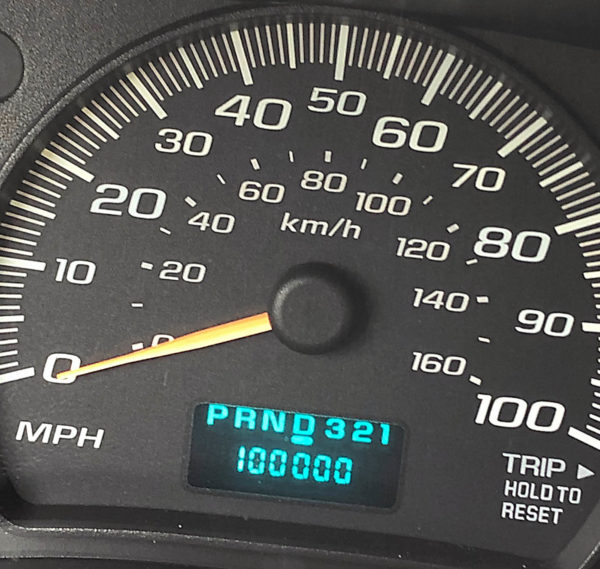
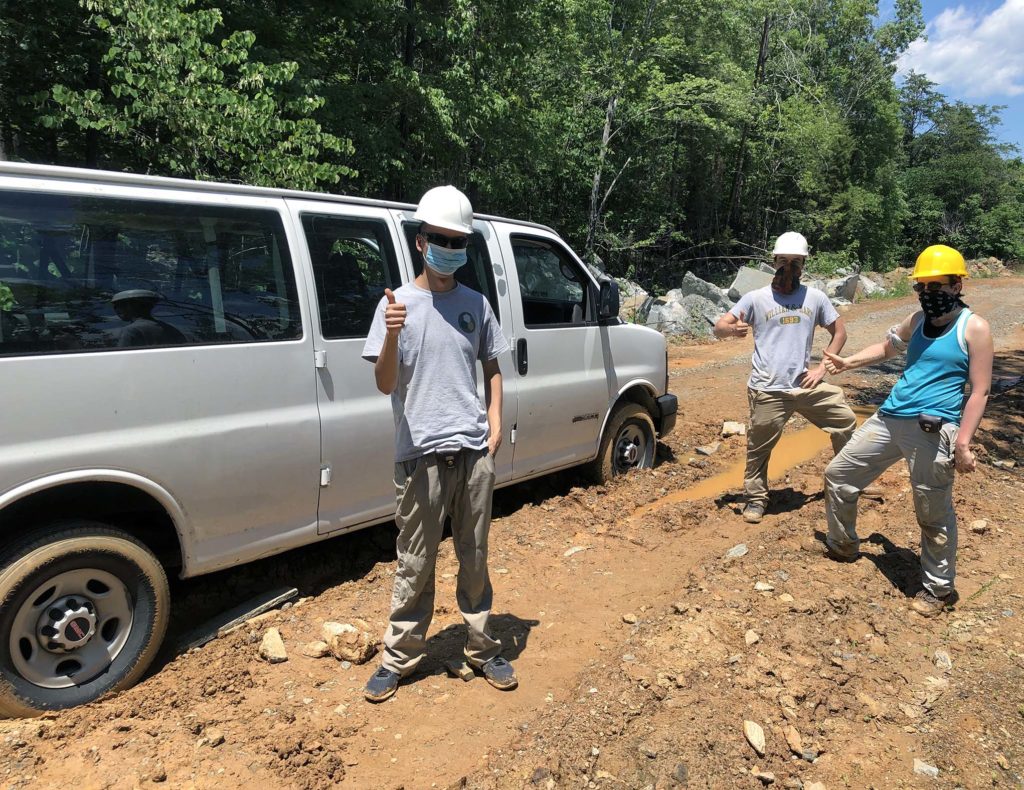


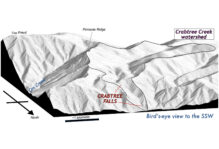
I’ll never forget the first time I traveled to the BRM in this bad boy. It was life changing and I enjoyed that spectacular view in the geo van. I’ll also never forget the struggle to get that sucker out the mud in central VA. Best of luck in the coming years with taking more students out in this beautiful vehicle.
I remember seeing van while I was still in Community College working on my AS. I even got to be in it at one point during the 2105 field trip! At the time, I could not have predicted how many times I would have gotten in this van to go someplace new or how many notes I would have taken in between outcrop stops. 100,000 miles is the goal for any hard-working vehicle. Here’s to (hopefully) 100,000 more!
Although my time with this van has just begun, the memories made already hold a special place in my heart. Speed bumps are best enjoyed from the left side of the very back seat.